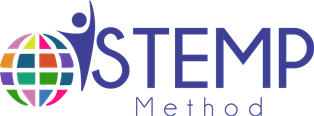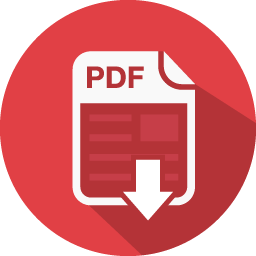

STEMP Students Empowered Teaching Method.
A Free and Open-Access Teaching Method that Supports Campus Internationalization.
Developing global competencies (soft and hard) requires a teaching approach that changes the traditional power structure in the classroom. This method empowers students to learn for themselves, to help others learn, to be themselves, to tap into their individual attitudes and aptitudes.
Students are empowered and supported in a way so that they are in charge of the teaching-learning processes.
"There is a large and longstanding body of research measuring the positive impact of peers teaching peers. The effect is twofold. Researchers have found that learning from fellow students fosters deep understanding of the material and a positive attitude toward the subject matter. But studies have also found that the benefit is mutual — that simply preparing to teach others deepens one’s own knowledge." (Langer, 2016)
We have videos and resources for teachers to learn about the method, how it is implemented and how to pilot it. STEMP can be implemented with the support of textbooks and it can also be implemented without textbooks. STEMP can be adapted to be used in classes with no technology to classes with high use of technology.
Note: This method is not intended to be a "one-size-fits-all" method. It is intended to be flexible, open and adaptable. It was created to serve as a provocative resource, a sensitizer, a reference, which educational institutions can tap into in its entirety or only utilize the parts that are needed or useful. We respect your academic freedom.
STEMP is based on a variety of theoretical concepts. We use Cornell University´s Center for Teaching Excellence´s resources as a theoretical basis for STEMP: Flipping the Classroom, Active Learning, Collaborative Learning, Problem-Based Learning, Using Rubrics, Student Evaluations of Method and the Teaching. We also use resources on the importance of Drama in Education such as the Research Project supported by the European Union Drama Improves Competences in Education (DICE).
STEMP
Student Responsibilities
Pictures used in this section show EFL/ESL classes where STEMP was piloted. This does NOT mean that STEMP works only in foreign language classes. STEMP works to teach ANY content class as well.
Class Facilitation by Students
See Rubric
1. Student Presentations
In teams, students are given 50 minutes to present a topic or a number of topics assigned by the instructor. Students will always know their topic a minimum of two weeks in advance. Students prepare all content and materials for their presentations. 
• Student Presentation Materials
Students are responsible for creating all class materials for the day their team is facilitating a class. 
2. Interactive Activities Facilitated by Students
Interactive activities must get everyone involved. Students are responsible for preparing and facilitating these activities. 
3. Students Monitor Classroom Learning
When facilitating a class, students have to prepare a printed handout with exercises that reinforce topics presented on that day. Students that present the topics are responsible for monitoring learning and making sure everyone understands the whys and hows of every topic and exercise. 
Student Scenarios
See Rubrics
Every two to three weeks, students perform (in teams of 2-3 participants) a scenario where they have to use the knowledge, skills and attitudes developed in class the previous two or three weeks. 
International Guest Speakers
Students are requiered to invite international guest speakers that live in the local community to present on a specific topic and interact with their classmates. 
Students Individual Portfolios
As part of the course, students keep a portfolio of all the activities and materials in class. It is individual work and can be either a hard-copy portfolio or an e-portfolio. It may even take the shape of a blog. Once a month, there is an instructor or peer-assessment of the portfolios.
Examples of student e-portfolios:
https://sites.google.com/uppuebla.edu.mx/victor-perez-velasco-9ma/inicio
https://sites.google.com/uppuebla.edu.mx/roxtzelhernandezpuga/inicio
https://sites.google.com/uppuebla.edu.mx/ingles3a/inicio
https://sites.google.com/uppuebla.edu.mx/henry-campos/inicio
https://sites.google.com/uppuebla.edu.mx/marcos-cinto/inicio
STEMP
Instructor Responsibilities
Before the First Day of Class
1. Meet with 2 or 3 instructors that wish to pilot STEMP in their classes. Discuss the method and clarify doubts.
2. Create calendar (plan every day/class of the course).
3. Prepare rubrics for the presentations, scenarios, guest speaker panels, portfolios, and anything else you will do in class. Rubric samples 
4. Create class syllabus.
5. Create materials to facilitate a topic and set the tone for student presentation expectations.
During Week 1
1. Facilitate a class with three components: a presentation, an interactive activity, & a printed activity.
2. Invite and host a guest speaker.
3. Explain the components of a scenario and perform one for the students.
4. Form presentation, scenario, and guest speaker groups.
Every Class from Week 2 Forward
1. Carry out daily formative assessments.
2. Facilitate or reinforce topics.
3. Check homework.
4. Enforce punctuality and attendance.
Every 3-4 weeks
1. Observe a class of at least one teacher that is also piloting STEMP.
2. Meet with other teachers piloting STEMP to share best practices, discuss challenges, and work together to find ways to improve what has not worked as expected.
Midterm SWOT Evaluation
Have students assess the method using a SWOT tool in the middle of course. 
Final SWOT Evaluation
Have students assess the method using a SWOT tool at the end of course. 
End of Term
Meet with other teachers piloting STEMP. Draw conclusions and prepare for a second pilot.
References
Langer, J. (2016). Students as Teachers. Exploring the mutual benefits of peer-to-peer teaching — and strategies to encourage it. Usable Knowledge. Harvard Graduate School of Education. Retreived from https://www.gse.harvard.edu/uk/blog/students-teachers

VIDEO: If students designed their own schools...

USMEXFUSION presented on the Teaching Method STEMP (Students Empowered) at the 6th International Virtual Global Education Conference 2015 http://www.globaleducationconference.com/ on Tuesday November 17th, 2015.
Title of the presentation: Empowering Students through the Open-Access Teaching Method Students Empowered (STEMP)
Watch the presentation below:

Empowering Students and Internationalizing Classrooms with the STEMP Teaching Method
by method co-creator Carlos S. Huerta Jimenez, MA.
Video Entrenamiento - STEMP para Enseñanza de Idiomas Extranjeros
por el co-creador del método Mtro. Carlos S. Huerta Jiménez

